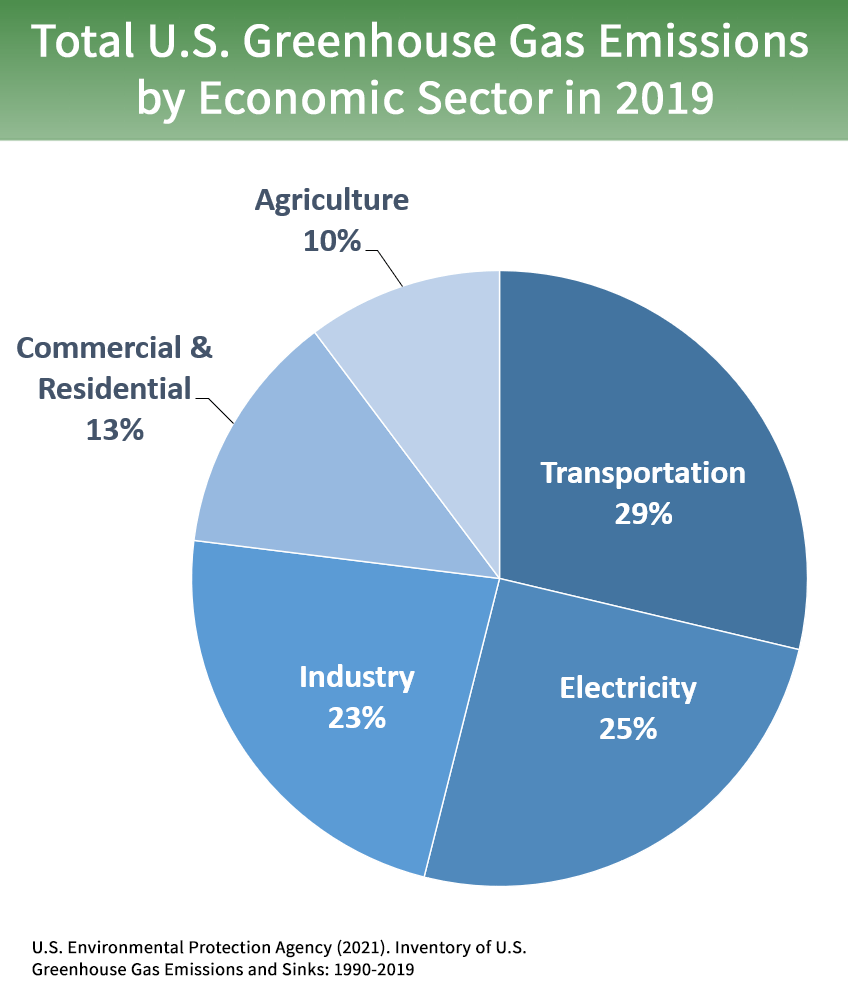Sustainability 101 Pathway:
What are Carbon Emissions and How Can They Be Reduced?
Over time, human activities and industries have been increasing the atmospheric carbon more quickly than natural activities. The good news is that there are solutions including carbon sequestration.
Hundreds of organizations across the US are pledging to reduce their carbon emissions. According to NPR, more than 300 businesses have signed an open letter calling on the Biden administration to reduce greenhouse gas emissions in the United States to at least half of 2005 levels by 2030. That would nearly double a previous target set by former President Barack Obama in 2015, who pledged a 25 to 28% reduction by 2025.
However, you may be wondering what carbon emissions are and why are they important? Let’s start with the basics.

Carbon Dioxide or CO2 is a greenhouse gas that consists of one part carbon and two parts oxygen. It is one of the most important gases on the earth because plants use it to produce carbohydrates in a process called photosynthesis.
You have probably heard of CO2 emissions in the news regarding global warming. As CO2 builds up in our atmosphere from burning fossil fuels, it has a warming effect that can change the earth’s climate.
Atmospheric carbon dioxide comes from two primary sources—natural and human activities. Natural sources of carbon dioxide include most animals, which exhale carbon dioxide as a waste product. Human activities that lead to carbon dioxide emissions come primarily from energy production, including burning coal, oil, or natural gas.
* Land Use, Land-Use Change, and Forestry in the United States is a net sink and removes approximately 12 percent of these greenhouse gas emissions, this net sink is not shown in the above diagram. All emission estimates from the Inventory of U.S. Greenhouse Gas Emissions and Sinks: 1990–2019.
Source: https://www.epa.gov/ghgemissions/sources-greenhouse-gas-emissions
Over time, human activities and industries have been increasing the atmospheric concentrations more quickly than natural activities. The good news is that there are solutions including carbon sequestration.
Carbon sequestration in agriculture is the process of capturing and storing atmospheric carbon dioxide in the soil. The idea is to stabilize carbon in solid and dissolved forms so that it doesn’t cause the atmosphere to warm. It is one method of reducing the amount of carbon dioxide in the atmosphere with the goal of reducing global climate change. For agriculture, adopting regenerative farming practices such as cover cropping, and reduced tillage farms can reduce carbon emissions.
CIBO Carbon Credits are calculated by using the grower’s practices to simulate GHG emissions and soil carbon change on a field.
CIBO Carbon Credits consist of three categories:
At CIBO, we support enterprises that are looking at the agriculture elements in their supply chain to understand how to inset or offset their carbon emissions. CIBO Enterprise provides insetting and incentives programs that provide direct payments (or other incentives) to growers for their regenerative practices.
Return to the pathway to build your knowledge of regenerative agriculture
Return to Pathway